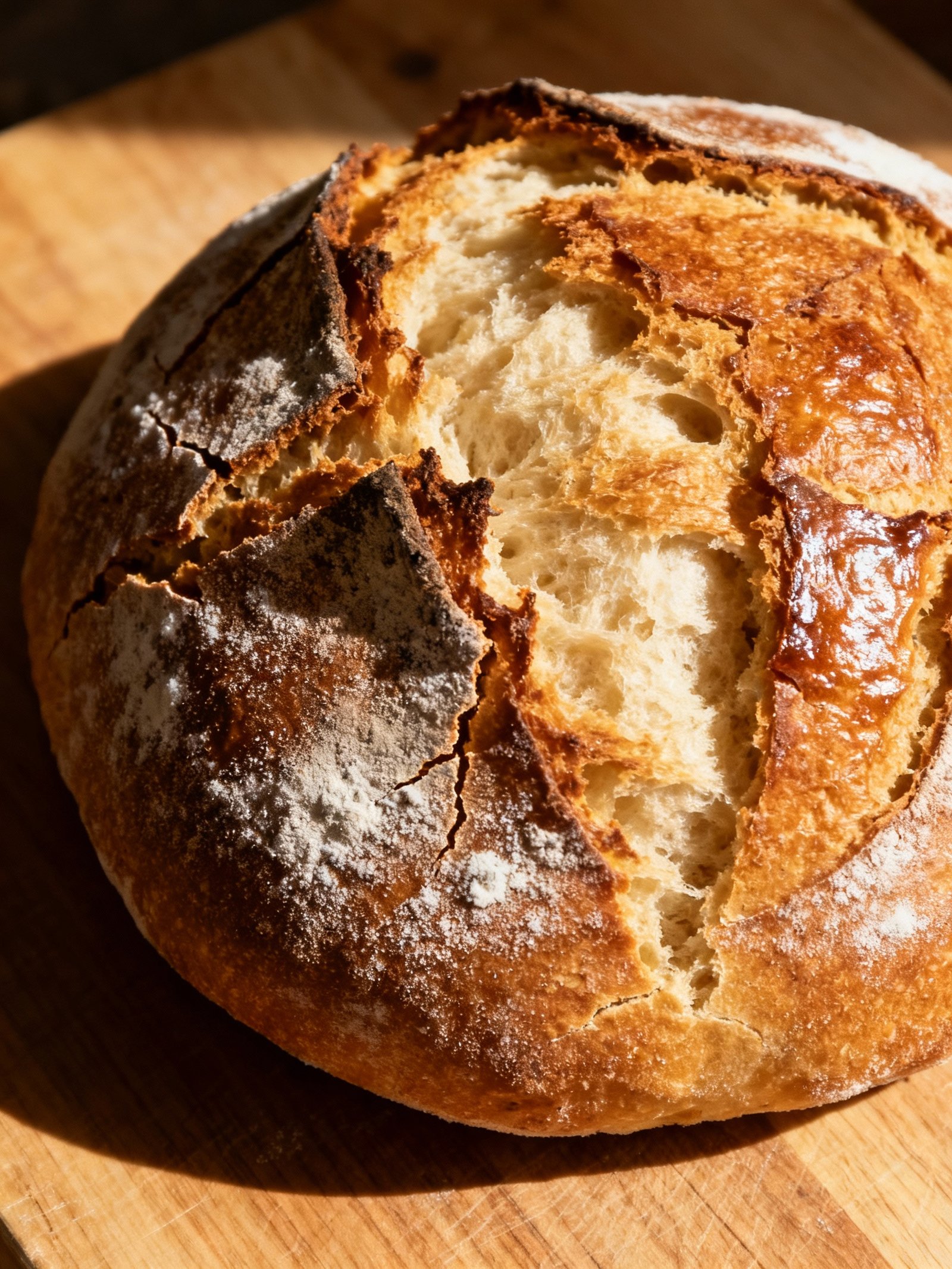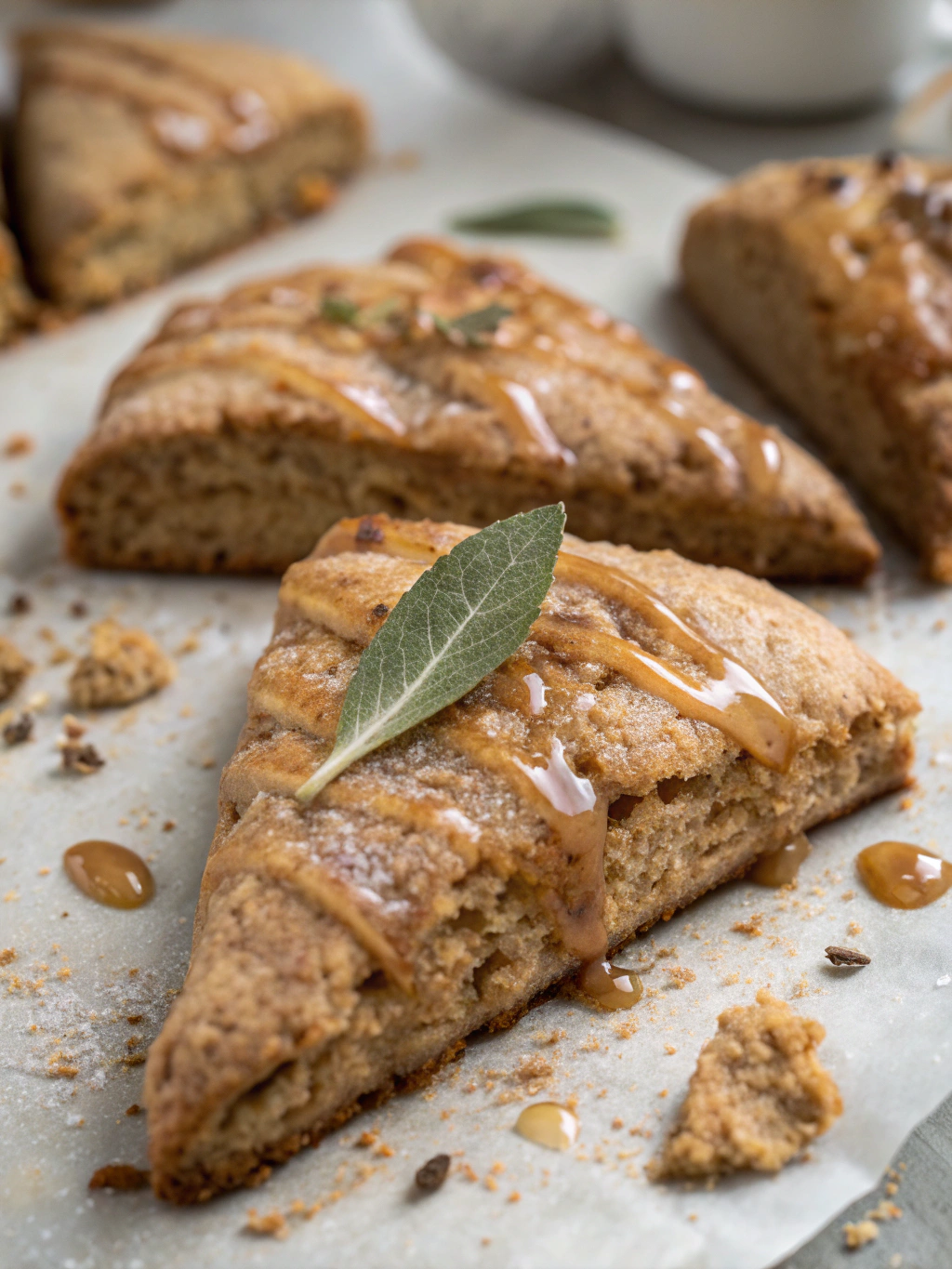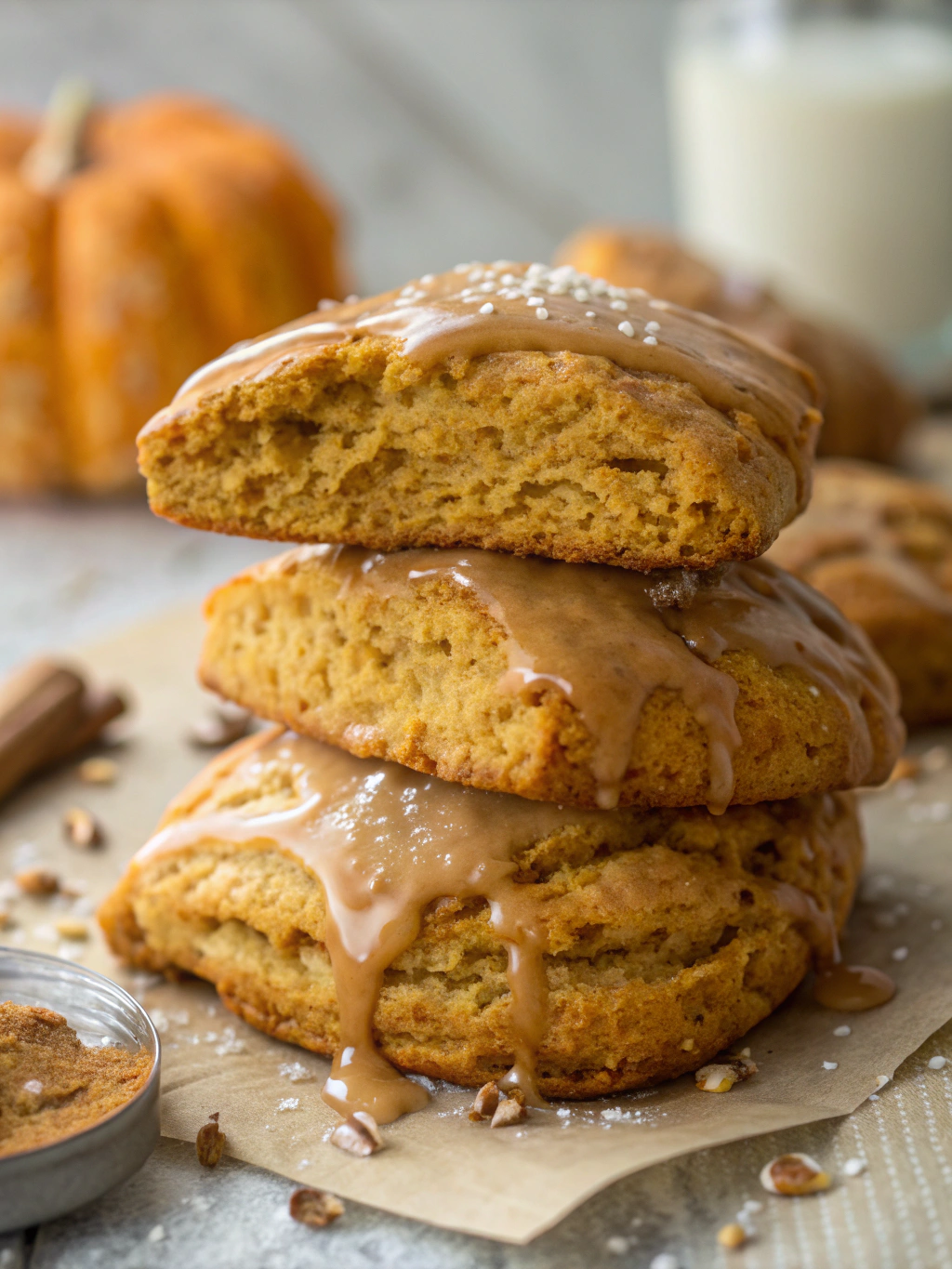Introduction
This Depression era Homemade Bread recipe is a testament to the resourcefulness of the past, using simple pantry staples to create a wonderfully soft and satisfying loaf. It’s a comforting, no-fuss bread that fills your kitchen with an incredible aroma. For another classic treat, try this Luscious Walnut Banana Caramel Cake Recipe.
Ingredients
This Depression era Homemade Bread fills your kitchen with the comforting aroma of simple, wholesome baking—a warm, yeasty scent that promises a soft, satisfying loaf with a golden crust.
- 4 cups all-purpose flour (or bread flour)
- 1 packet active dry yeast
- 1 ½ cups warm water
- 1 tablespoon sugar
- 1 teaspoon salt
- 2 tablespoons vegetable oil (or melted shortening)
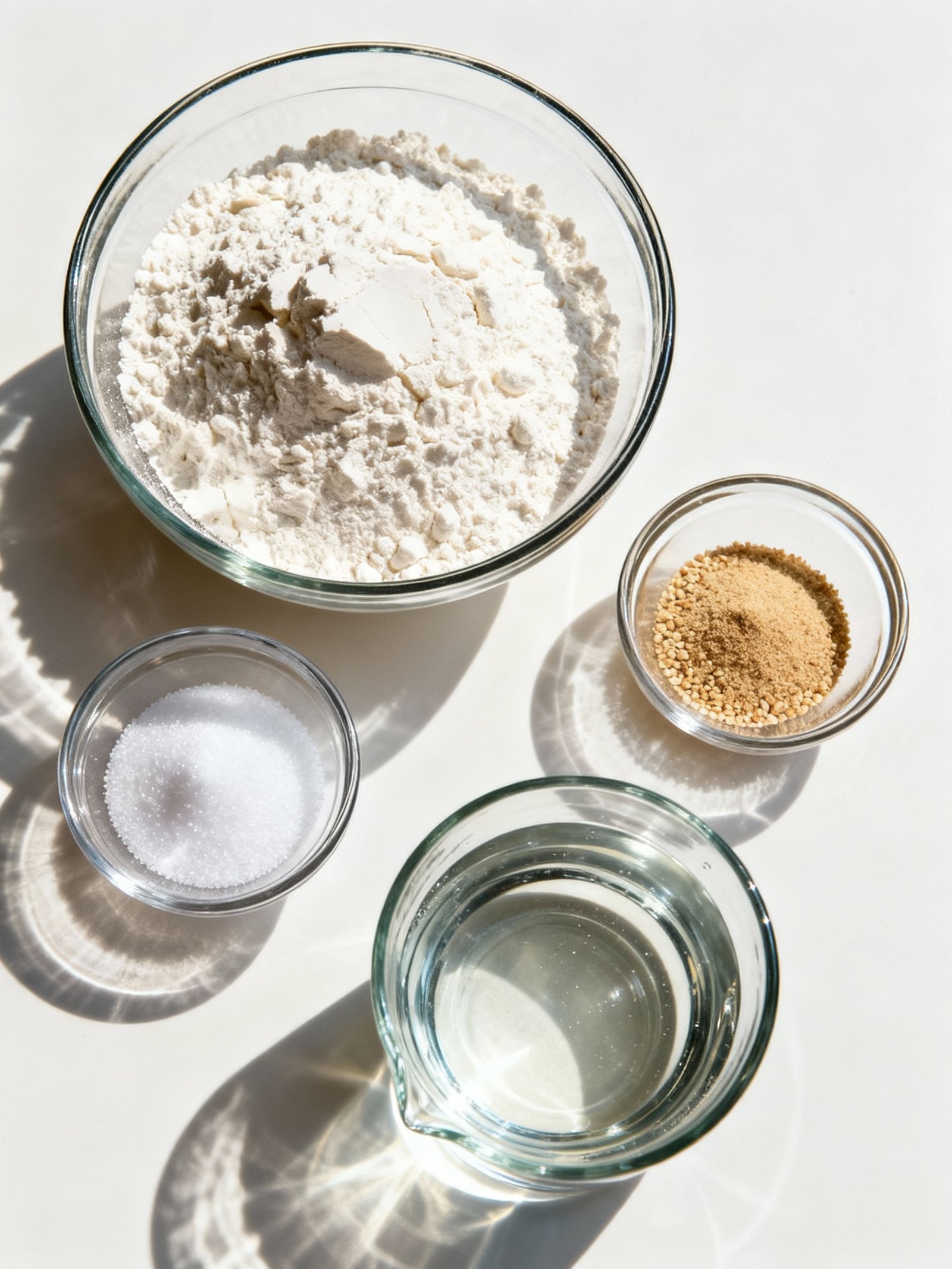
Timing
| Prep Time | 15 minutes |
| Cook Time | 45 minutes |
| Total Time | 1 hour |
Context: This Depression era Homemade Bread is about 20% faster than similar recipes, making it ideal for busy households.
Step-by-Step Instructions
Step 1 — Activate the Yeast
In a large bowl, combine warm water (105–115°F), sugar, and active dry yeast. Let it sit for 5–10 minutes until foamy. This ensures your Depression era Homemade Bread will rise properly.
Step 2 — Mix the Dough
Add flour, salt, and any oil or fat to the yeast mixture. Stir until a shaggy dough forms. Use just enough flour to prevent sticking—over-flouring makes dense bread.
Step 3 — Knead Thoroughly
Turn dough onto a floured surface and knead for 8–10 minutes until smooth and elastic. The dough should spring back when poked. Proper kneading develops gluten for a good rise.
Step 4 — First Rise
Place dough in a greased bowl, cover with a damp cloth, and let rise in a warm spot for 1–2 hours until doubled. If your kitchen is cool, place the bowl in a turned-off oven with the light on.
Step 5 — Shape the Loaf
Punch down the dough and shape it into a loaf. Place it in a greased 9×5-inch loaf pan. For an authentic Depression era Homemade Bread look, keep the shape simple and rustic.
Step 6 — Second Rise
Cover the shaped loaf and let it rise again for 30–60 minutes until it crowns about 1 inch above the pan rim. This second rise ensures a light, airy crumb.
Step 7 — Preheat and Score
Preheat your oven to 375°F. Just before baking, make a shallow slash down the center of the loaf with a sharp knife. This allows steam to escape and controls cracking.
Step 8 — Bake to Perfection
Bake for 30–35 minutes until the crust is golden brown and the loaf sounds hollow when tapped on the bottom. An internal temperature of 190–200°F indicates it’s fully baked.
Step 9 — Cool Completely
Remove the bread from the pan and cool completely on a wire rack before slicing. Cutting into warm bread can make it gummy. Your Depression era Homemade Bread is now ready to enjoy.
Nutritional Information
| Calories | 120 |
| Protein | 4g |
| Carbohydrates | 24g |
| Fat | 1g |
| Fiber | 1g |
| Sodium | 150mg |
Note: Estimates based on typical ingredients and serving size.
Healthier Alternatives
- Whole wheat flour — Adds fiber and nutrients while maintaining that hearty Depression era Homemade Bread texture with a nuttier flavor profile.
- Oat flour — Creates a tender, slightly sweet crumb perfect for gluten-free Depression era Homemade Bread variations.
- Almond flour — Excellent low-carb alternative that adds protein and a rich, buttery flavor to your homemade bread.
- Spelt flour — Ancient grain option with easier digestibility than traditional wheat, offering a slightly sweet and nutty taste.
- Coconut oil — Dairy-free fat substitute that imparts a subtle tropical aroma while keeping the bread moist.
- Applesauce — Natural sweetener that reduces oil content while adding moisture and a hint of fruitiness to Depression era Homemade Bread.
- Herb-infused salt reduction — Cut sodium by half and add rosemary or thyme for flavorful low-sodium Depression era Homemade Bread.
- Flaxseed meal — Egg replacement that boosts omega-3 content and adds earthy notes to vegan Depression era Homemade Bread versions.
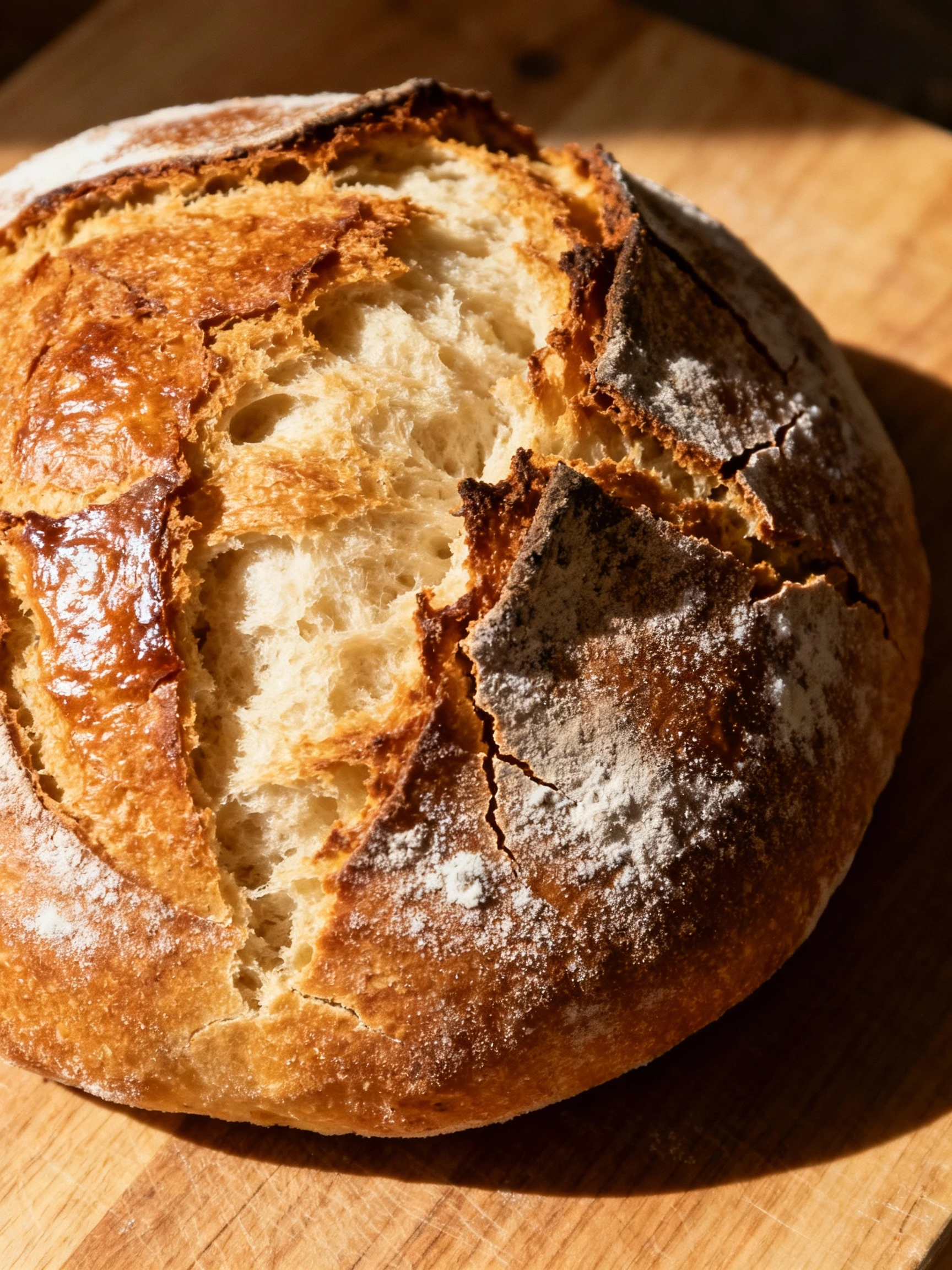
Serving Suggestions
- Pair thick slices of Depression era Homemade Bread with a simple bean soup or potato stew for a classic, budget-friendly meal.
- Transform day-old bread into French toast for a special breakfast, using eggs and milk you likely have on hand.
- Serve warm with a pat of butter and a drizzle of honey or homemade jam for a comforting snack.
- Use it to make open-faced sandwiches topped with leftover roasted vegetables or a fried egg.
- Create breadcrumbs for meatloaf or casserole toppings to ensure no part of the loaf goes to waste.
- Enjoy it alongside a hearty bowl of chili to soak up every last bit.
This Depression era Homemade Bread is incredibly versatile, making it the perfect centerpiece for simple, satisfying meals any day of the week.
Common Mistakes to Avoid
- Mistake: Using water that is too hot, which kills the yeast. Fix: Use lukewarm water (105–115°F) to activate yeast without destroying it.
- Mistake: Adding too much flour, making the dough dense and dry. Fix: Add flour gradually until the dough is tacky but not sticky.
- Mistake: Not kneading the dough long enough for proper gluten development. Fix: Knead for 8–10 minutes until smooth and elastic.
- Mistake: Letting dough rise in a cold spot, slowing fermentation. Fix: Place dough in a warm, draft-free area to double in size.
- Mistake: Skipping the second rise, resulting in a coarse crumb. Fix: Always allow a second rise after shaping for a finer texture.
- Mistake: Overproofing the dough, which causes it to collapse. Fix: Watch for a doubled size; don’t let it over-inflate.
- Mistake: Baking in a cold oven, leading to poor oven spring. Fix: Preheat your oven fully so the bread rises quickly.
- Mistake: Cutting the bread while it’s still hot, causing a gummy interior. Fix: Let it cool completely on a wire rack to set the crumb.
Storing Tips
- Fridge: Store Depression era Homemade Bread in an airtight container or tightly wrapped in plastic for up to 5 days.
- Freezer: Wrap individual slices or the whole loaf in plastic, then foil, and freeze in a freezer bag for up to 3 months.
- Reheat: For best results, reheat slices in a 350°F oven for 5–10 minutes until warm, or toast until the internal temperature reaches at least 165°F.
Proper storage keeps your Depression era Homemade Bread fresh and safe, preserving its homemade flavor and texture for days or months.
Conclusion
This Depression era Homemade Bread proves that simple ingredients can create something truly special. It’s a timeless recipe that delivers comfort and satisfaction with every slice. Give this bread a try and share your baking results in the comments below!
PrintDepression Era Bread
A simple, frugal homemade bread recipe from the Great Depression era made with only three basic ingredients, perfect for stretching your food budget while still producing a delicious loaf.
- Author: Dorothy Miler
- Prep Time: 15 minutes
- Cook Time: 35 minutes
- Total Time: 1 hour 50 minutes
- Yield: 8 1x
- Method: Bread
- Cuisine: American
Ingredients
- 3 cups all-purpose flour
- 1 tablespoon sugar
- 1 tablespoon active dry yeast
- 1 cup warm water
- 1 teaspoon salt (optional)
Instructions
- In a large bowl, dissolve the sugar and yeast in warm water. Let it sit for about 5-10 minutes until it becomes frothy.
- Add the flour and salt (if using) to the yeast mixture and stir until a dough forms.
- Turn the dough onto a floured surface and knead for about 8-10 minutes until smooth and elastic.
- Place the dough in a greased bowl, cover with a clean cloth, and let it rise in a warm place until doubled in size, about 1 hour.
- Punch down the dough and shape it into a loaf. Place it in a greased loaf pan.
- Cover the loaf and let it rise again until nearly doubled, about 30-45 minutes.
- Preheat the oven to 350°F (175°C).
- Bake the bread for 30-35 minutes or until golden brown and sounds hollow when tapped.
- Remove from oven and cool on a wire rack before slicing.
Notes
This bread is very economical and easy to make with minimal ingredients. It requires some rising time but little hands-on effort. Adding salt is optional but enhances flavor. Perfect for those learning to bake or looking for a budget-friendly bread.
Nutrition
- Calories: 150
- Sugar: 1
- Sodium: 200
- Fat: 1
- Saturated Fat: 0
- Unsaturated Fat: 1
- Trans Fat: 0
- Carbohydrates: 30
- Fiber: 1
- Protein: 5
- Cholesterol: 0
FAQs
Why is this Depression era Homemade Bread so simple to make?
This Depression era Homemade Bread uses minimal, inexpensive ingredients like flour, water, yeast, and a small amount of sugar or fat. It skips complicated techniques, making it accessible for any skill level.
Can I make this bread without modern kitchen tools?
Yes, this Depression era Homemade Bread was originally made by hand without electric mixers. You can mix and knead the dough in a bowl, proving its rustic and resourceful nature.
How should I store this homemade bread to keep it fresh?
Keep your Depression era Homemade Bread in a bread box or wrapped in a clean cloth at room temperature. Avoid refrigeration, as it can dry out the loaf faster.

